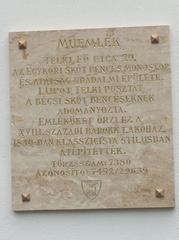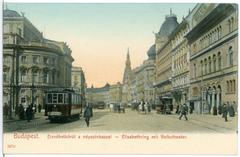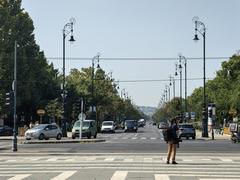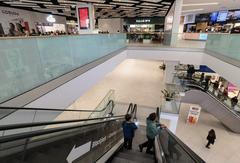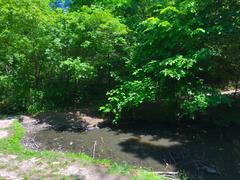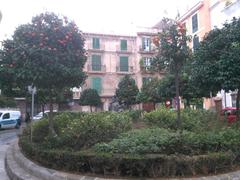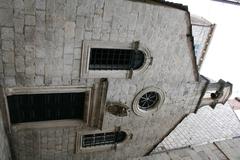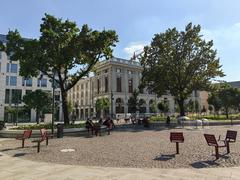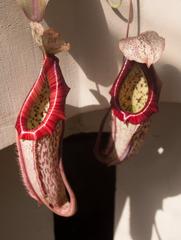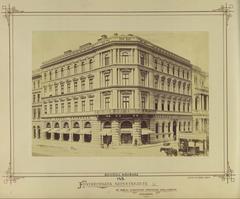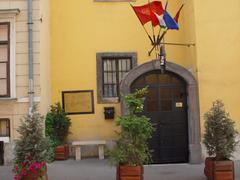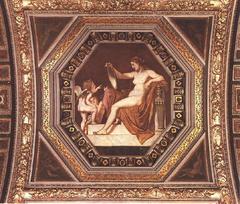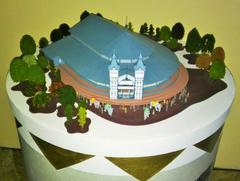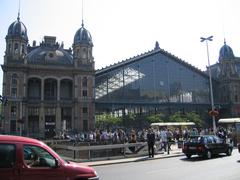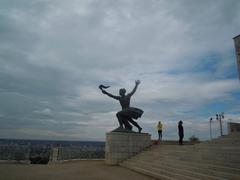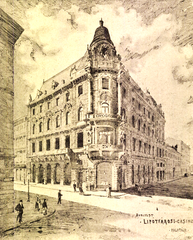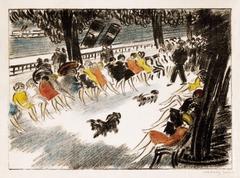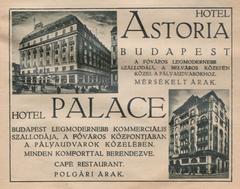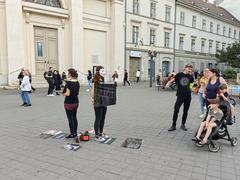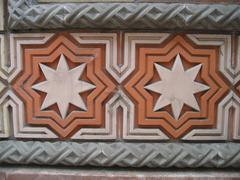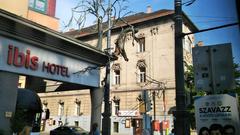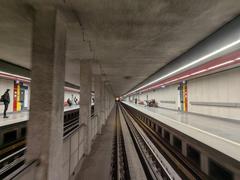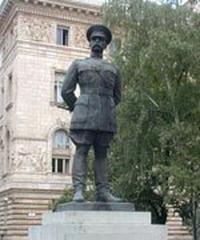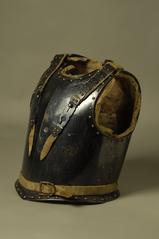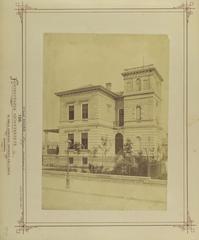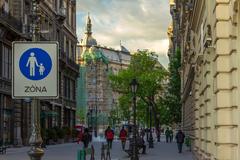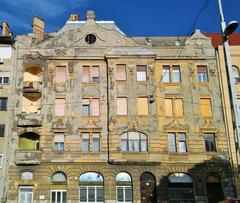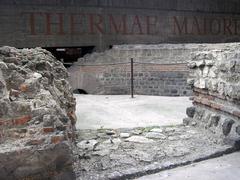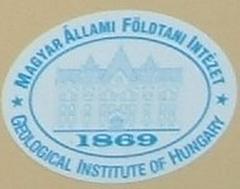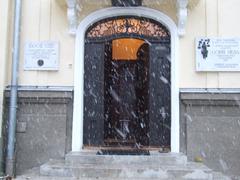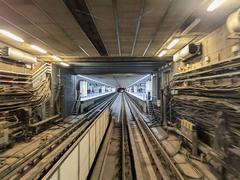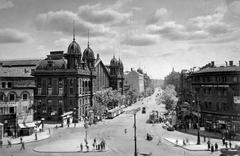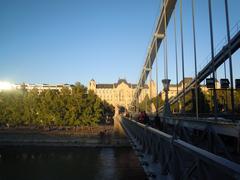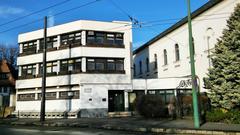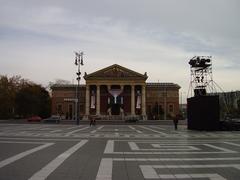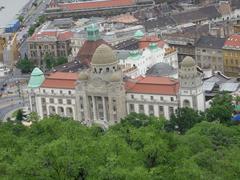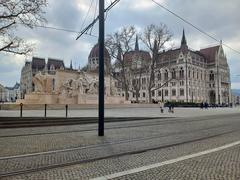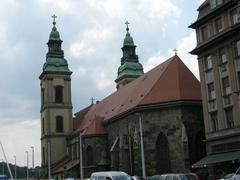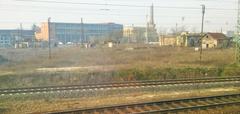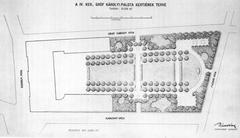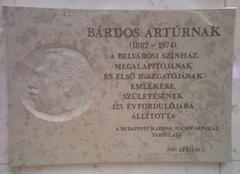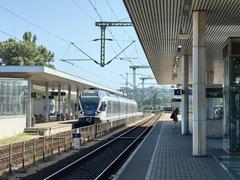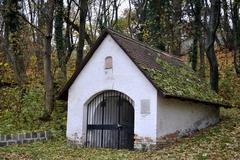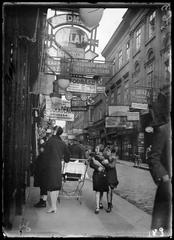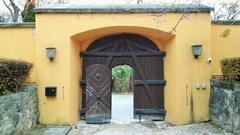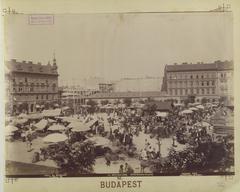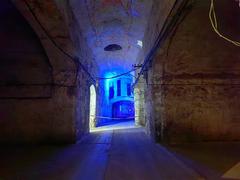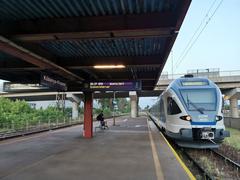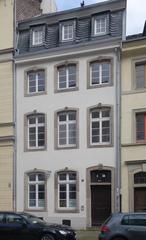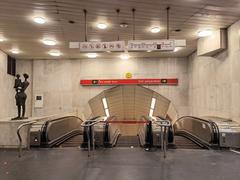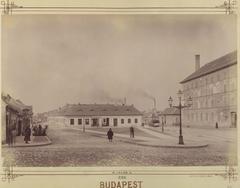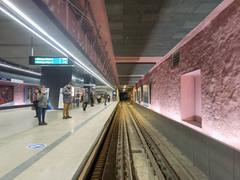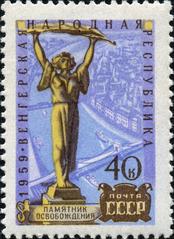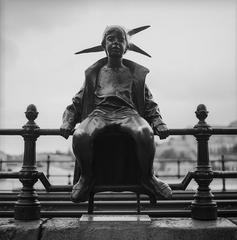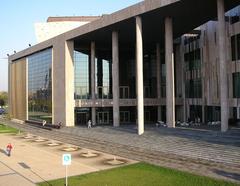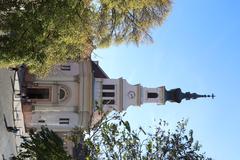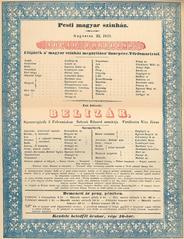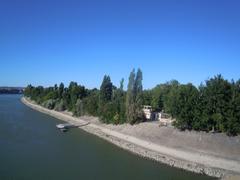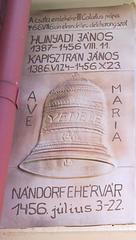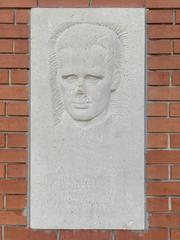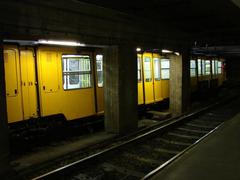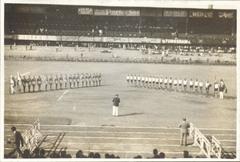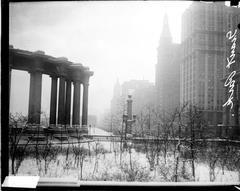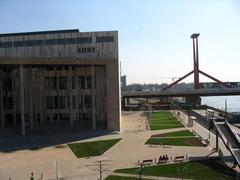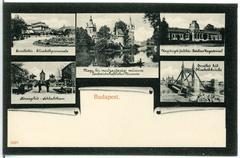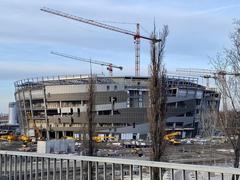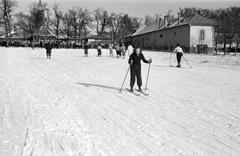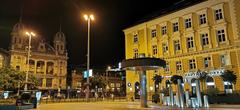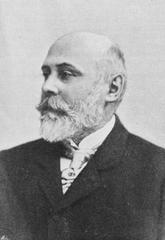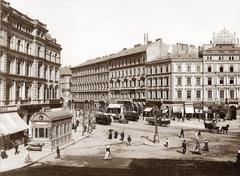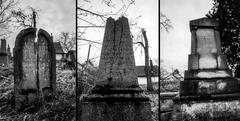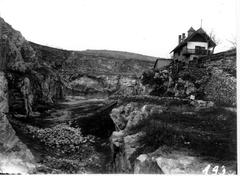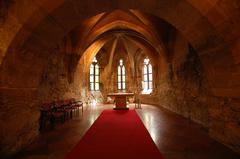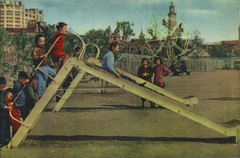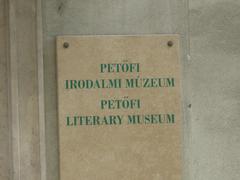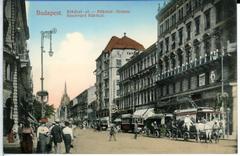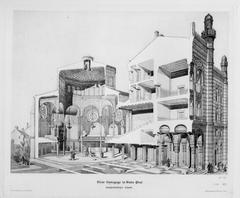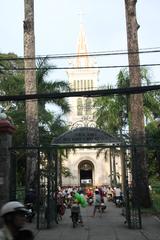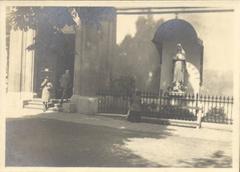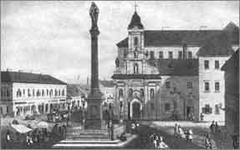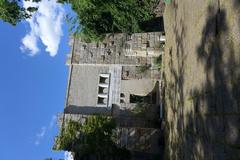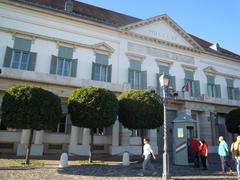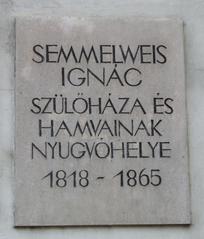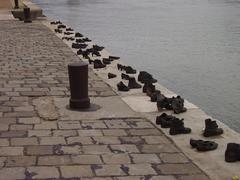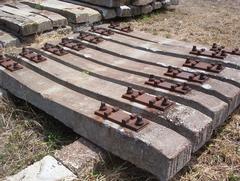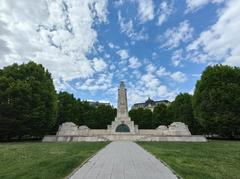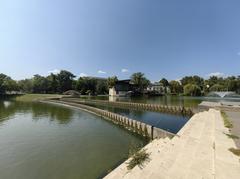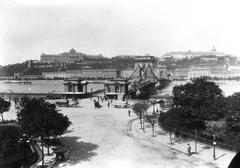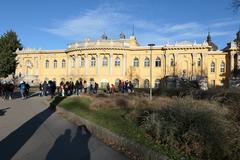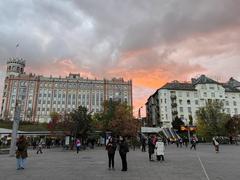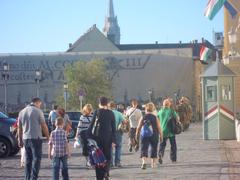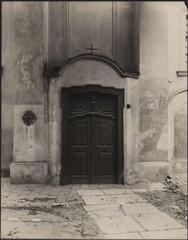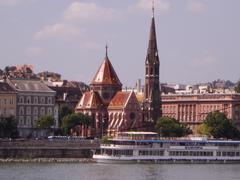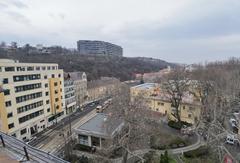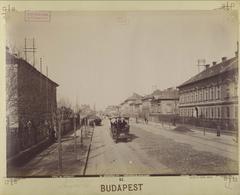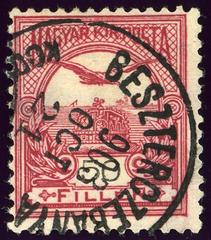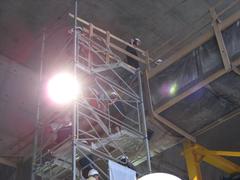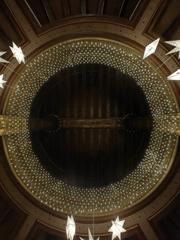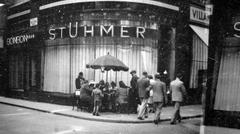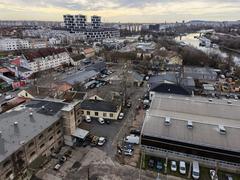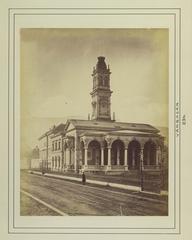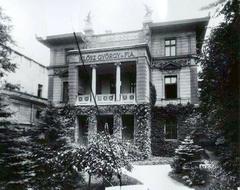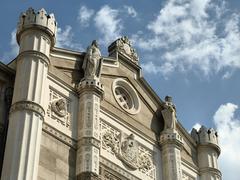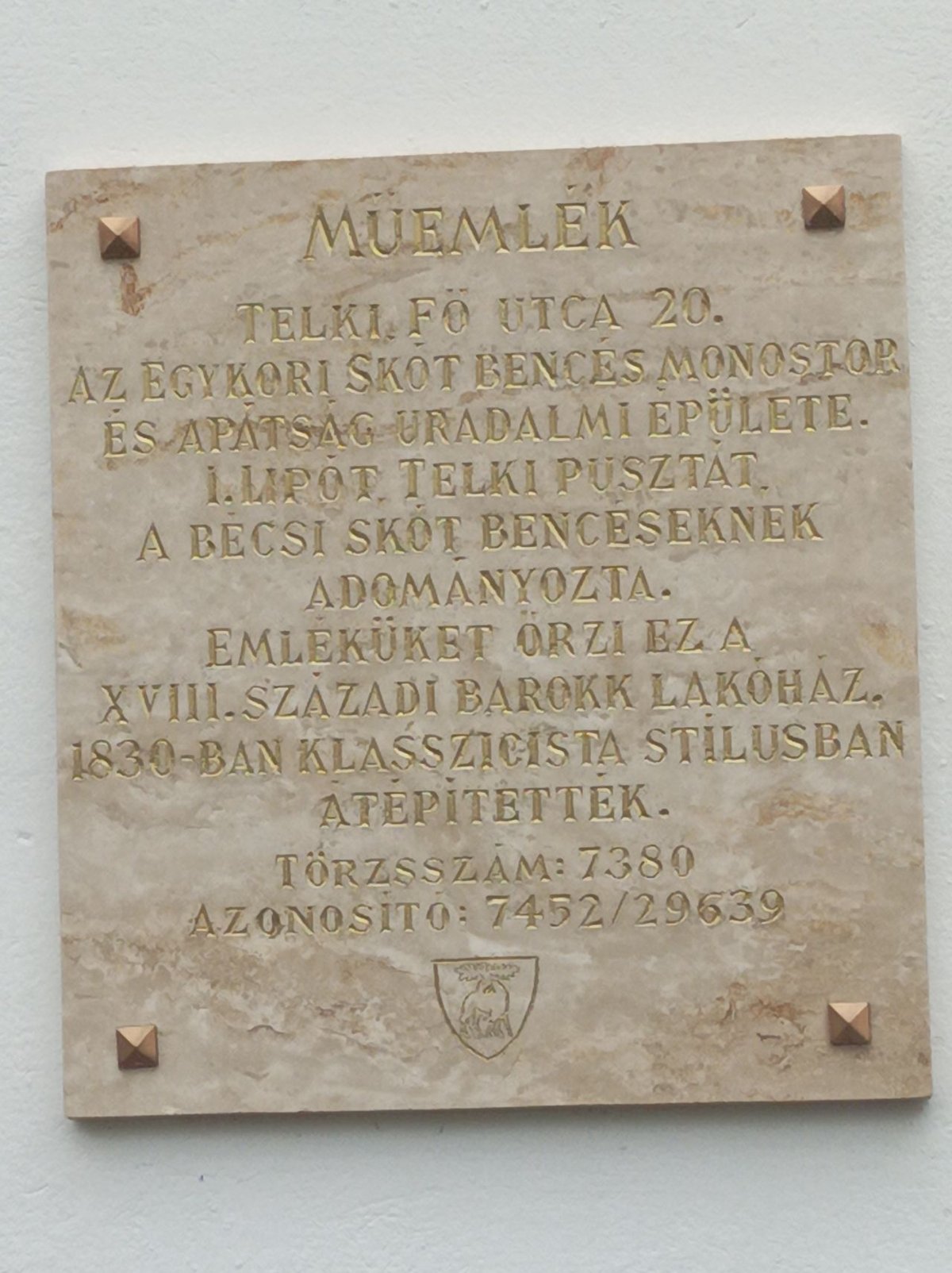
Visiting Buda Landscape Protection Area: History, Visitor Tips, and More
Date: 18/07/2024
Introduction
The Buda Landscape Protection Area, established in 1978, is a gem nestled within Budapest, Hungary. Spanning over 10,600 hectares, this area encompasses the Buda Hills, a striking contrast to the flat terrain of Pest across the Danube River. Steeped in geological history and rich in biodiversity, the Buda Hills offer a unique blend of natural beauty and cultural heritage. Visitors can explore limestone plateaus, caves, springs, and valleys, with archaeological evidence dating human presence back to the Stone Age. The Buda Hills have also played a significant role in Budapest’s development, particularly from the 13th century when King Béla IV built his royal palace here, establishing the Buda Castle District. This transformation continued with the flourishing of vineyards and the construction of palaces and gardens, making the area a retreat for Hungarian royalty and aristocracy (source).
The ecological importance of the Buda Landscape Protection Area cannot be overstated. It acts as a ‘green lung’ for Budapest, offering air purification, temperature regulation, and water management. The diverse flora includes rare orchids and endemic species like the Hungarian Spurge, while fauna ranges from the Saker Falcon to the European Souslik (source). For visitors, the area provides numerous recreational opportunities, from hiking and biking trails to historical and cultural sites. Special events, guided tours, and photographic spots enhance the experience, making it a must-visit destination in Budapest (source).
Table of Contents
- [Visiting the Buda Landscape Protection Area](#visiting-the-buda-landscape-protection-areavisiting-the-buda-landscape-protection-area)
- [Geological Formation and Early History](#geological-formation-and-early-historygeological-formation-and-early-history)
- [Royal Influence and Development](#royal-influence-and-developmentroyal-influence-and-development)
- [Establishment of the Protected Area](#establishment-of-the-protected-areaestablishment-of-the-protected-area)
- [Significance and Conservation Efforts](#significance-and-conservation-effortssignificance-and-conservation-efforts)
- [Visitor Information](#visitor-informationvisitor-information)
- [Visiting Hours](#visiting-hoursvisiting-hours)
- [Ticket Prices](#ticket-pricesticket-prices)
- [Guided Tours](#guided-toursguided-tours)
- [Best Time to Visit](#best-time-to-visitbest-time-to-visit)
- [Travel Tips](#travel-tipstravel-tips)
- [Special Events and Photography Spots](#special-events-and-photography-spotsspecial-events-and-photography-spots)
- [Exploring the Buda Landscape Protection Area](#exploring-the-buda-landscape-protection-areaexploring-the-buda-landscape-protection-area)
- [Ecological and Environmental Importance](#ecological-and-environmental-importanceecological-and-environmental-importance)
- [Recreation and Well-being](#recreation-and-well-beingrecreation-and-well-being)
- [Nearby Attractions and Accessibility](#nearby-attractions-and-accessibilitynearby-attractions-and-accessibility)
- [Conservation Efforts and Responsible Tourism](#conservation-efforts-and-responsible-tourismconservation-efforts-and-responsible-tourism)
- [Complete Guide to Visiting the Buda Landscape Protection Area](#complete-guide-to-visiting-the-buda-landscape-protection-areacomplete-guide-to-visiting-the-buda-landscape-protection-area)
- [Planning Your Visit](#planning-your-visitplanning-your-visit)
- [Exploring the Area](#exploring-the-areaexploring-the-area)
- [Essential Tips for a Memorable Experience](#essential-tips-for-a-memorable-experienceessential-tips-for-a-memorable-experience)
- [FAQ](#faqfaq)
- [Visit and Stay Up to Date](#visit-and-stay-up-to-datevisit-and-stay-up-to-date)
Visiting the Buda Landscape Protection Area
Geological Formation and Early History
The geological history of the Buda Hills dates back millions of years. Formed by volcanic activity and shaped by the forces of erosion, these hills boast a diverse landscape of limestone plateaus, caves, springs, and valleys. Evidence suggests human presence in the area as far back as the Stone Age, with archaeological findings pointing to settlements from the Roman and Celtic periods.
Royal Influence and Development
The Buda Hills played a pivotal role in the development of Budapest. During the 13th century, following the Mongol invasion, King Béla IV of Hungary chose this strategic location to build his royal palace, laying the foundation for what would become the Buda Castle District. The hills provided natural defenses and offered a commanding view of the surrounding areas.
Over the centuries, the Buda Hills became a favored retreat for Hungarian royalty and aristocracy. Vineyards flourished on the sunny slopes, and numerous palaces, villas, and gardens were built, transforming the landscape into a tapestry of natural beauty and architectural grandeur.
Establishment of the Protected Area
By the 20th century, the increasing urbanization of Budapest posed a threat to the natural environment of the Buda Hills. Recognizing the need to preserve this unique landscape, the Hungarian government designated the area as a protected zone in 1978. This designation aimed to safeguard the biodiversity, geological formations, and cultural heritage of the region.
Significance and Conservation Efforts
The Buda Landscape Protection Area holds immense significance:
- Biodiversity: Home to a remarkable variety of flora and fauna, including rare plant species, protected bird species, and diverse mammal populations.
- Geological Heritage: Showcases unique geological formations, including caves, karst formations, and thermal springs, providing valuable insights into the Earth’s history.
- Cultural Significance: Dotted with historical monuments, ancient ruins, and architectural masterpieces, reflecting the rich cultural heritage of Budapest.
Conservation efforts focus on:
- Habitat Preservation: Maintaining the natural habitats of various plant and animal species through sustainable land management practices.
- Sustainable Tourism: Promoting responsible tourism practices to minimize the impact on the environment and preserve the area for future generations.
- Cultural Heritage Protection: Preserving and restoring historical monuments and archaeological sites within the protected area.
Visitor Information
Visiting Hours
The Buda Landscape Protection Area is open year-round. However, specific attractions within the area, such as caves or historical sites, may have varying visiting hours. It’s recommended to check the official website for up-to-date visiting hours.
Ticket Prices
Entry to the Buda Landscape Protection Area is generally free, but some attractions within the area may require tickets. Prices can vary, so visitors should refer to the official site for detailed ticket information.
Guided Tours
Guided tours are available for those interested in a more in-depth exploration of the area’s natural and historical significance. These tours can be booked in advance through the official website or local tour operators.
Best Time to Visit
The Buda Landscape Protection Area can be enjoyed year-round, but spring and autumn are particularly pleasant due to mild weather and vibrant natural scenery. Early mornings and weekdays are less crowded, offering a more serene experience.
Travel Tips
- Getting There: The Buda Hills are accessible by public transport, including buses and trams. Car rentals and bike rentals are also available for those who prefer more flexibility.
- Nearby Attractions: While visiting, consider exploring nearby attractions such as the Buda Castle, Gellért Hill, and the thermal baths of Budapest.
- Accessibility: Some areas within the Buda Hills are more accessible than others. Visitors with mobility issues should check specific accessibility information for each attraction.
Special Events and Photography Spots
The Buda Landscape Protection Area hosts various events throughout the year, including nature walks, historical reenactments, and educational workshops. Photography enthusiasts will find numerous scenic spots, especially at sunrise and sunset, capturing the breathtaking views of Budapest.
Exploring the Buda Landscape Protection Area
Ecological and Environmental Importance
Despite its proximity to a bustling metropolis, the Buda Landscape Protection Area harbors a surprisingly rich diversity of flora and fauna. This biodiversity is crucial for maintaining a healthy ecosystem, providing numerous ecological services that benefit both nature and humans.
- Flora: The area boasts a mosaic of habitats, from lush forests dominated by oak, beech, and lime trees to dry grasslands and rocky outcrops. This variety supports a diverse flora, including several protected and endangered plant species like rare orchids and the Hungarian Spurge (Euphorbia glareosa).
- Fauna: The diverse vegetation provides shelter and sustenance to a wide array of animal species. Birdwatchers can spot rare birds of prey like the Saker Falcon (Falco cherrug) and the Eastern Imperial Eagle (Aquila heliaca), while the forests are home to mammals like deer, wild boar, and the protected European Souslik (Spermophilus citellus). The area’s numerous caves provide crucial hibernation sites for bats, playing a vital role in their conservation.
Recreation and Well-being
Beyond its ecological significance, the Buda Landscape Protection Area provides invaluable recreational opportunities for the residents of Budapest and beyond. Its easily accessible trails, stunning views, and peaceful atmosphere offer a welcome respite from the hustle and bustle of city life.
- Hiking and Nature Trails: The area boasts a well-maintained network of hiking trails, catering to all levels of fitness. These trails wind through diverse landscapes, offering opportunities for nature observation, birdwatching, and simply enjoying the fresh air and tranquility.
- Historical and Cultural Sites: Interspersed within the natural beauty are historical and cultural landmarks, adding another layer of interest for visitors. Ancient ruins, historical buildings, and charming villages provide glimpses into the area’s rich past and cultural heritage.
- Mental and Physical Well-being: Studies have shown that spending time in nature has numerous benefits for mental and physical health. The Buda Landscape Protection Area provides a readily accessible escape for city dwellers to reconnect with nature, reduce stress, and improve their overall well-being.
Nearby Attractions and Accessibility
- Nearby Attractions: The Buda Landscape Protection Area is in close proximity to several other notable attractions in Budapest, including the Buda Castle, Margaret Island, and the Fisherman’s Bastion. Combining visits to these sites can provide a rich and varied experience of Budapest’s natural and cultural offerings.
- Accessibility: The area is accessible by public transport, with several bus and tram lines connecting it to the city center. Parking facilities are also available for those traveling by car. Certain parts of the area are wheelchair accessible, although some trails may be challenging for those with mobility issues.
Conservation Efforts and Responsible Tourism
Protecting the ecological integrity of the Buda Landscape Protection Area is paramount. Various conservation efforts are underway to address the challenges posed by human activities and ensure the long-term health of this valuable ecosystem.
- Protected Species and Habitats: Strict regulations are in place to protect endangered and vulnerable species and their habitats within the area. This includes monitoring populations, restoring degraded habitats, and raising awareness among visitors about the importance of conservation.
- Sustainable Tourism Practices: Promoting sustainable tourism is crucial to minimize the impact of visitors on the environment. This includes encouraging responsible hiking practices, minimizing waste, and respecting wildlife and their habitats.
- Community Involvement: Engaging local communities in conservation efforts is essential for long-term success. This includes educating residents about the importance of the protected area, promoting sustainable livelihoods, and fostering a sense of stewardship for this valuable natural heritage.
Complete Guide to Visiting the Buda Landscape Protection Area
Planning Your Visit
- Best Time to Visit: The Buda Landscape Protection Area is beautiful year-round, but spring and autumn offer the most pleasant temperatures for hiking and exploring. Spring brings blooming wildflowers, while autumn paints the hillsides in vibrant hues.
- Getting There:
- Public Transport: The area is easily accessible by public transport within Budapest. Several bus lines (e.g., buses 21, 21A, and 112) and the cogwheel railway (Fogaskerekű) have stops near popular trailheads.
- Car: While driving is possible, parking can be limited, especially on weekends. Consider using public transport to minimize your environmental impact and avoid parking hassles.
- Entrance Fees: Access to the Buda Landscape Protection Area is free of charge.
- Visiting Hours: The area is open to visitors 24/7, though individual attractions within the area may have specific operating hours.
- Time Allocation: Allocate at least half a day to fully appreciate a specific area within the Buda Hills. However, with numerous trails and attractions, you can easily spend multiple days exploring the entire region.
Exploring the Area
- Hiking and Biking: The Buda Hills offer a network of well-maintained hiking and biking trails suitable for all fitness levels.
- Popular Trails:
- Normafa to János Hill: This moderate 5 km (3 miles) hike takes you to the highest point in Budapest, offering panoramic city views.
- Children’s Railway (Gyermekvasút): This unique railway line, operated mostly by children, winds through the forested hills, offering scenic views and a fun experience.
- Makkosmária Pilgrimage Site: A historic site with a church, monastery ruins, and a peaceful atmosphere, accessible by a moderate hike.
- Trail Maps: Obtain a detailed trail map from tourist information centers or download one online before you go.
- Popular Trails:
- Caves: The Buda Hills are known for their network of caves, some of which are open to the public.
- Pál-völgyi Cave and Szemlő-hegyi Cave: These caves offer guided tours showcasing fascinating geological formations.
- Historic Sites:
- Buda Castle: While technically not within the protected area, Buda Castle sits atop Castle Hill, offering stunning views of the Buda Hills and the Danube River.
- Gellért Hill: Another prominent hill overlooking the city, Gellért Hill features the iconic Liberty Statue and the Citadella fortress, offering historical insights and panoramic views.
- Relaxation and Recreation:
- Libegő Chairlift: Take a scenic ride on the Libegő Chairlift, enjoying panoramic views of the city and the Buda Hills.
- Thermal Baths: Budapest is famous for its thermal baths, and several are located near the Buda Hills, offering relaxation and rejuvenation after a day of exploring.
- Special Events and Guided Tours: Look out for seasonal events, festivals, and guided tours that offer deeper insights into the area’s natural and cultural heritage.
- Photographic Spots: Capture stunning views from various vantage points, such as János Hill and Gellért Hill, for unforgettable memories.
Essential Tips for a Memorable Experience
- Pack Appropriately: Wear comfortable shoes suitable for hiking, and dress in layers as the weather can change quickly in the hills.
- Stay Hydrated: Carry plenty of water, especially during warmer months, as drinking water sources may be limited on some trails.
- Respect Nature: Stay on marked trails to protect the delicate ecosystem, and pack out everything you pack in.
- Be Aware of Wildlife: While encounters are rare, be mindful that the area is home to various animals, including wild boars and deer.
- Learn Basic Hungarian Phrases: While English is widely spoken in tourist areas, learning a few basic Hungarian phrases can enhance your interactions with locals.
- Savor Hungarian Cuisine: Indulge in hearty Hungarian dishes at traditional restaurants in the Buda Hills, enjoying the flavors of local cuisine.
- Capture the Memories: Bring your camera to capture the stunning scenery, historical landmarks, and unique experiences.
FAQ
- What are the visiting hours for the Buda Landscape Protection Area? The area is open year-round with seasonal hours. Check the official website for current visiting hours.
- Are there any entrance fees? Generally, entrance is free, but specific attractions or guided tours may have fees. Verify on the official site.
- How can I get there? Public transport options include buses and trams. Parking is available for cars. Some parts are wheelchair accessible.
- Are there guided tours available? Yes, guided tours are available and can provide deeper insights into the area’s ecological and cultural significance.
- Can I have a picnic in the Buda Landscape Protection Area? Yes, picnicking is allowed in designated areas. Visitors are encouraged to follow the Leave No Trace principles to keep the area clean.
Visit and Stay Up to Date
For the latest updates, download the official mobile app Audiala, check out other related posts, or follow our social media channels. The Buda Landscape Protection Area stands as a shining example of how natural beauty and cultural heritage can coexist harmoniously. It serves as a reminder of the importance of conservation and offers visitors a unique opportunity to connect with nature and history in the heart of Budapest.
Conclusion
The Buda Landscape Protection Area stands as a testament to Budapest’s commitment to preserving its natural and cultural heritage. Established in 1978, this expansive area offers a diverse landscape shaped by geological forces and rich in biodiversity. It serves as a vital green lung for the city, providing ecological services that enhance the quality of life for residents and visitors alike. The Buda Hills have a storied history, from ancient settlements to royal retreats, and continue to be a beloved destination for both locals and tourists. With its well-maintained trails, historical sites, and unique geological formations, the area offers endless opportunities for exploration and relaxation. Conservation efforts ensure the protection of this valuable ecosystem, promoting sustainable tourism and community involvement. As visitors immerse themselves in the natural beauty and cultural significance of the Buda Landscape Protection Area, they contribute to its preservation for future generations. For more information and updates, visitors are encouraged to download the official mobile app Audiala or follow the area’s social media channels (source).
References
- Visiting the Buda Landscape Protection Area - History, Significance, and Visitor Tips, 2024 (source)
- Exploring the Buda Landscape Protection Area - Visiting Hours, Tickets, and Ecological Importance, 2024 (source)
- Complete Guide to Visiting the Buda Landscape Protection Area - Tips, Tickets, and Best Hiking Trails, 2024 (source)
